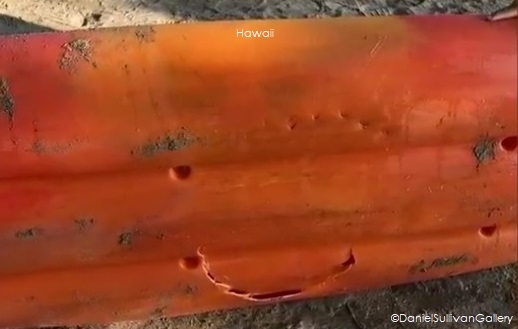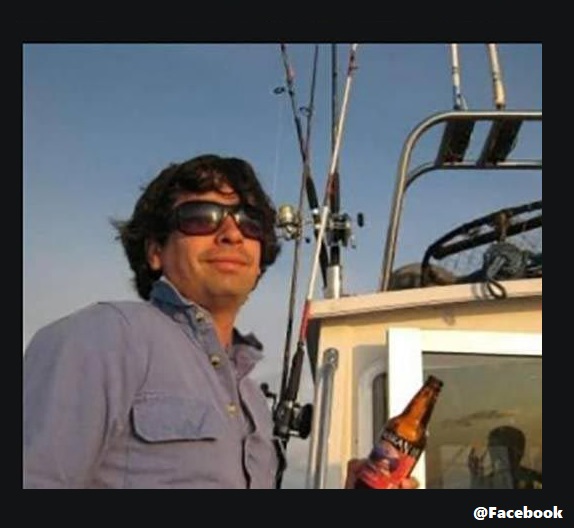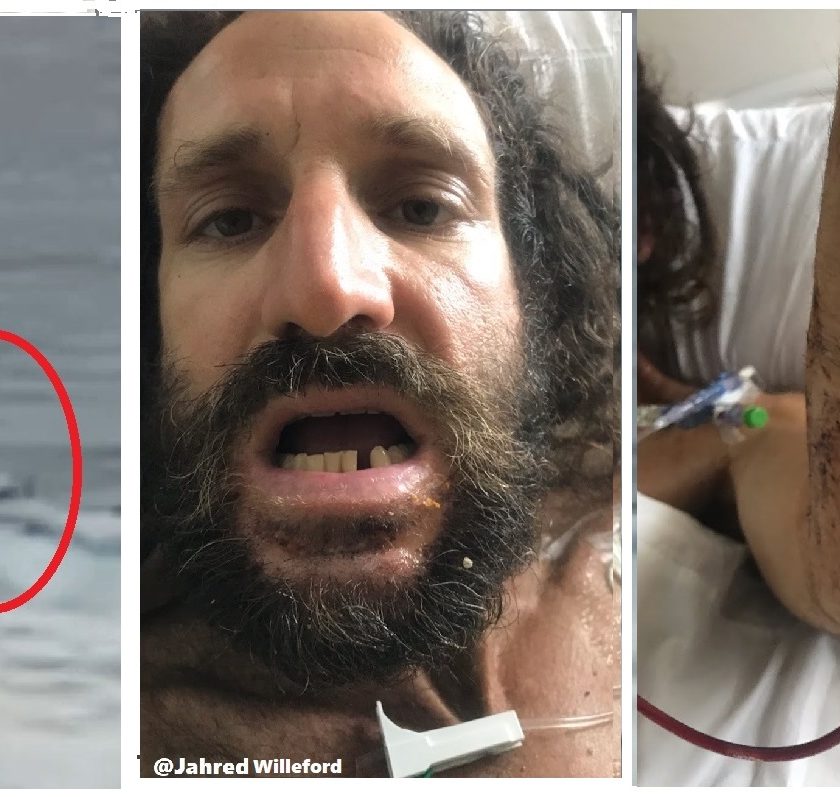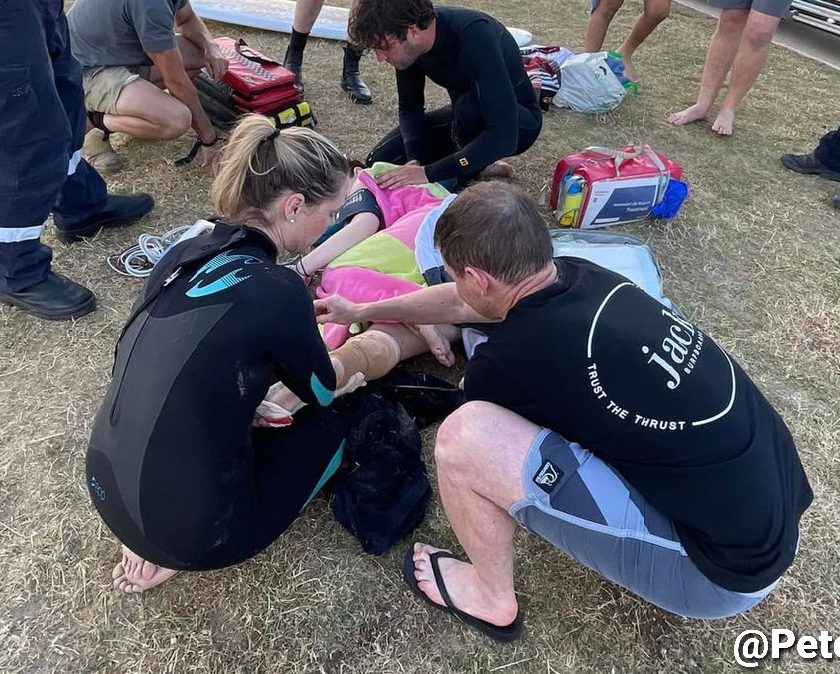A father and son are at now safe at home after a long swim to shore when what may have been great white shark attacked their kayak.
Daniel Sullivan and his 15-year-old son Tristan were looking for whales and dolphins to photograph about a mile off Ukumehame in West Maui Feb. 2.
Before 2 p.m. they were near an area known as Thousand Peaks when their kayak was suddenly lifted out of the water and pulled down. They quickly abandoned their two-man kayak.
“All of a sudden it just came out of nowhere and just flipped us with a lot of force,” Tristan told Hawaii News Now. “. . . the scariest part was when we were trying to get back in and it kept flipping and we knew it was right under us.”

They estimated the shark at 10- to 13-feet long with a pointed nose. After the father and son were in the water, the shark continued biting the kayak.
“When its mouth rose up and bit into the kayak, it was like a scene out of a movie. The water streaming off of it, these giant teeth coming right at us, and then the way it just pushed the entire boat up halfway and pulled us back down into the water,” Daniel said.
He said the shark was right by his leg as it bit the kayak. Daniel used his paddle to strike the shark as he and his son struggled in the water.
“I was like, we’re going to die,” Tristan said. “My dad hit the shark with his paddle so I’m pretty sure that scared it long enough for us to get away.”
The duo, now stuck in the ocean, made a judgment call and began the long swim back to shore.
After 35 minutes they finally hit the beach and alerted authorities, who promptly shut down the shoreline and ventured out to collect the kayak.
Daniel estimated the bite radius on the kayak as about a foot and half wide.
Although the majority of negative shark interactions in the islands involve tiger sharks, based on the tooth marks left on the vessel, it is plausible a white shark was involved.
White sharks have been known to visit the island, though attacks or bites by the sharks are rare.
The Hawaii Department of Land and Natural Resources has taken measurements and is attempting to confirm the species involved.
More than 5,000 miles away, an Australian lifesaver had a similar run-in with a shark.
Jed Ffrench, 17, was with several friends Feb. 2 during surf lifesaving training off the Adelaide, South Australia. The group was about a mile off Glenelg Beach around 7 p.m. when the teen felt a thud on the back of his surfski.
He turned to see a red-eyed shark, identified as a bronze whaler, biting the back of his ski before it submerged into the water.
The group quickly paddled back to shore. Once on the beach, they lifted up the surfski and water drained from puncture holes left by the roughly 6 1/2-foot shark.
“Jed was shaken and is very thankful to back on dry land. This won’t deter him from getting back in the ocean as soon as possible,” the Ffrench family said in a statement.
Both shark encounters highlight the importance of carrying emergency supplies for any offshore excursion. A marine radio, flares and a waterproof cell phone can be lifesavers.
Both locations have been marked on the 2021 Shark Attack Map.


